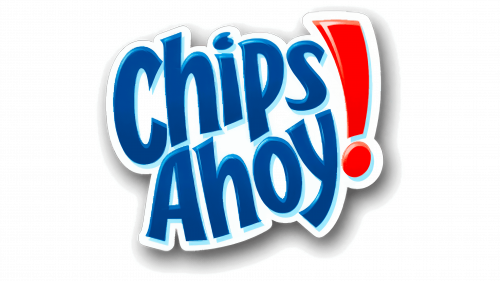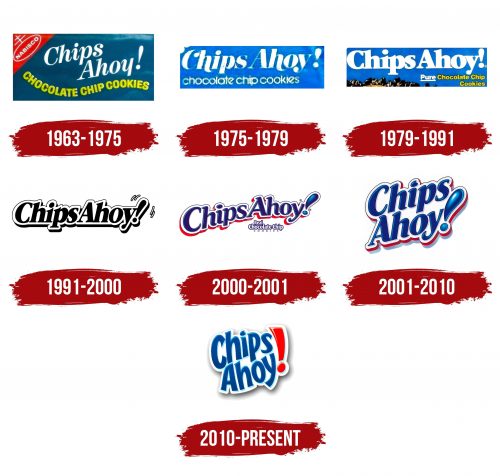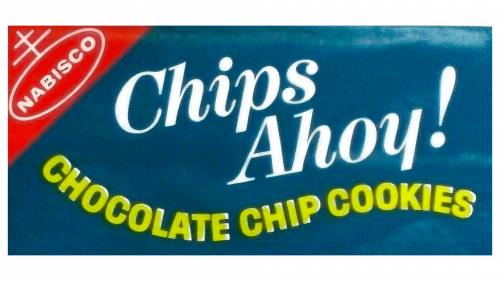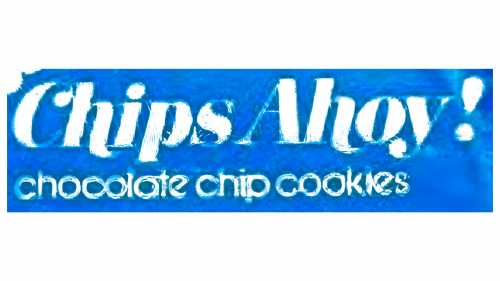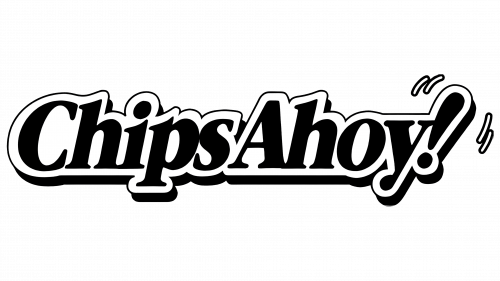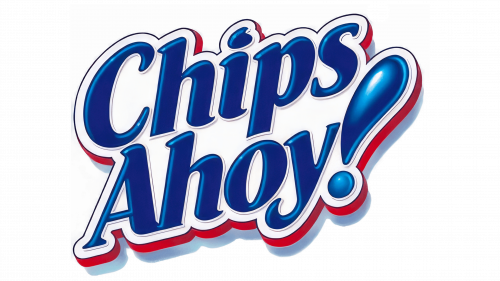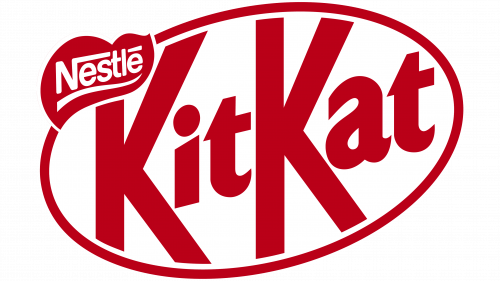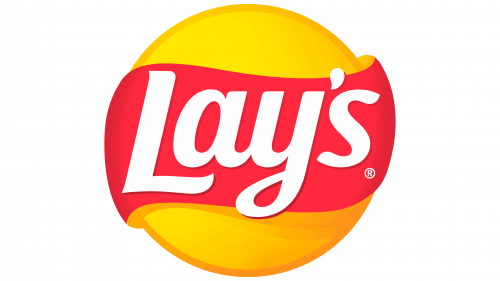The Chips Ahoy logo is one of the most expressive and impressive. Its modern design accurately conveys the manufacturer’s concept and demonstrates the product’s excellence. Over its long existence, the brand has become beloved by many. Customers enjoyed the taste of the treats, which became associated with gastronomic pleasure.
Designers put much effort into creating a recognizable logo that tells the essential story. The logo easily and effectively holds the target audience’s attention. The color palette is carefully selected, and every identity element is thoughtfully designed. Looking at the logo, it’s clear that there are no better treats than Chips Ahoy. The complex yet easily readable company symbol has determined the brand’s success. The path to this success was long, with each stage being a period of changes and innovations.
Chips Ahoy!: Brand overview
When Nabisco (National Biscuit Company) decided to enter the chocolate chip cookie industry in 1963, Chips Ahoy! ‘s history officially began. Although there were already products in this industry then, Nabisco recognized a chance to develop a distinctive offering that would set it apart from rivals.
The creation of the recipe required several months. The goal of Nabisco’s expert team’s experiments was to find the ideal balance between rich chocolate flavor and crunchy cookies by experimenting with different ingredients and amounts. The amount and size of chocolate chips in each cookie were carefully considered.
“Chips Ahoy!” was purposefully chosen as the name. The phrase “Ships Ahoy!” is a play on words that refers to the number of chocolate “chips” packed inside each biscuit. Additionally, this name offered the brand a playful and endearing quality.
The product officially debuted in the US market in 1963. The cookies’ superior quality and intense flavor helped them quickly become well-known. One of the main selling points was the statement that each container included at least 1000 chocolate chips.
The brand saw significant expansion during the 1970s. The product expanded internationally and increased its market share in the United States. The first large television ad campaign was introduced during this period, greatly boosting brand recognition.
Nabisco kept developing new ideas for its product line in the 1980s. The original recipe’s softer version of “Chewy Chips Ahoy!” ” was first released in 1984. Thanks to this product line development, the brand attracted a new audience that enjoyed soft cookies.
The product line gained additional diversification in the 1990s. Different kinds of chocolate, almonds, and other ingredients were added to the cookie dough, among other variants. In 1996, the reduced-fat range was introduced in response to the increased demand for healthier snack options.
An important corporate shift occurred in 2000 when Kraft Foods purchased Nabisco. This combination gave the brand more potential to grow, giving it access to a wider distribution network and more funding for R&D.
The 2000s were a time of active brand invention. The company started experimenting with different flavors and forms. In 2003, Chips Ahoy! with Reese’s was introduced, combining features of popular chocolate candy with traditional biscuits.
The brand grew its product line in the 2010s due to shifting consumer preferences. Subtypes like Chips Ahoy! Thins, a crispier and thinner cookie, and Ice Cream Creations were developed, flavored after famous ice cream variations.
The brand celebrated its 50th anniversary in 2013. A unique ad campaign and limited edition merchandise were introduced to commemorate this achievement.
After Kraft Foods was reorganized in 2015, “Chips Ahoy!” joined Mondelez International. This shift did not affect the brand’s appeal and awareness but created fresh international growth opportunities.
2016 witnessed the introduction of Thins Bites, a smaller version of the well-liked thin cookies designed to satisfy the demand for portable snacks and portion control.
In 2017, the company released Chips Ahoy! Reese’s Peanut Butter Cups combine portions of the well-known chocolate peanut butter chocolates with traditional cookies.
In 2018, the ground-breaking Chewy Gooey line was released. This line had a mushy, gooey middle and targeted customers who liked deeper flavor experiences.
2019 saw the introduction of limited-edition, seasonal flavors like Red Velvet and Reese’s Pieces. These limited editions contributed to both retaining and gaining new customers’ interest in the brand.
The company introduced brownie-filled cookies as they experimented with new tastes in 2020.
2021 marked the release of Chips Ahoy! Sour Patch Kids, an odd blend of cookies and pieces of well-known sour candies, exemplifies the brand’s dedication to novel and surprising taste combinations.
The company expanded its market share in the healthy eating space in 2022 with the launch of sugar-free Thin Bites, responding to the rising need for more healthful snack options.
Over these years, the firm aggressively expanded its online and social media presence. It also ran several effective web advertising campaigns to attract a younger demographic.
2023 witnessed a continuation of the exploration of novel flavors and formats. To commemorate its 60th year, the company unveiled a limited-edition Birthday Cake variety. This cookie blended the traditional flavor with birthday cake-inspired components, like vibrant sprinkles.
The business also improved its environmental programs. The firm started utilizing more environmentally friendly packaging, boosting the percentage of recycled materials and aiming for entirely recyclable packaging.
The company kept expanding its online presence. Customers may digitally “create” their versions of cookies and vote for the finest concepts with the introduction of an interactive web campaign.
Regarding new product innovation, the brand responded to the growing trend of functional snacking by launching a new “Chips Ahoy! Protein” range enhanced with protein.
Additionally, the firm increased its global reach by concentrating on developing markets in Latin America and Asia, where unique flavors were introduced to suit regional tastes.
Meaning and History
What is Chips Ahoy!?
It is a brand of chocolate chip cookies produced by Nabisco, a subsidiary of Mondelēz International. The brand is known for its crispy and chewy cookie varieties, each filled with chocolate chips. It offers a wide range of flavors and types, including original, chewy, broken, and variants with added ingredients such as Reese’s and caramel. The brand is a popular choice for those looking for classic, delicious cookies and is widely available in grocery stores, convenience stores and online retailers. It has become a staple in many families and is loved by children and adults alike.
1963 – 1975
The first brand logo features blue, red, and yellow colors in different proportions, each holding symbolic meaning, conveying freedom of thought, and allowing you to enjoy cookies wherever you are. Blue dominates as the background color, coexisting with red.
Designers decided to present three informational blocks, each with its impact. The first thing noticeable is the brand name, written in large but thin letters, indicating who makes the excellent cookies. The text is quickly and easily readable. The second informational block contains product details, with letters appearing to float on a wave, reflecting dynamism and lightness. The top left corner is highlighted in red and stands out as a separate element, attracting attention.
1975 – 1979
During this period, designers updated the logo, removing excessive symbolic elements. The inscriptions disappeared, and the logo became less dynamic. The text is arranged in two parallel rows: the upper row has larger, dense letters with rounded ends, and the product information occupies the lower row. The letters are well-read, with excellent visibility. A simple punctuation mark remains, giving the logo an exclamatory tone. “Notice the fabulous cookies!” is the message from the producers. The blue background and light lettering harmonize well together.
1979 – 1991
The new interpretation of the logo resembles a scene from a Christmas movie. The blue background has become richer and brighter, creating an effect of shimmering and twinkling, similar to holiday lights. The focus is not on the product being meant for celebrations but on highlighting the vivid flavor of the product.
The text detailing information appears very clear. The letters have gained dimension, and their font has slightly changed. The emblem is divided into sections: the brand name occupies the central position, while the lower corner features text about the product and its benefits. A striking design on the right side adds meaning and draws attention to new products.
Overall, the logo accurately reflects the company’s philosophy: the product is created for the enjoyment of both children and adults. The delightful cookies melt in your mouth, allowing you to forget all problems and unpleasantness, giving a boost of energy and a great mood.
1991 – 2000
In 1991, the logo update was a pleasant surprise for regular customers. The new logo was unusual, eliciting excitement and interest. The logo had a sense of strictness for the first time in the history of selling the most chocolatey cookies. A touch of aristocracy combined with creativity became a hallmark of the new design.
The background is perfectly white, creating a sense of absence. Attention is drawn to the elegant black letters, an interesting play of opposites. The outline is captivating: white, emphasizing each line of the bold letters forming the familiar brand name.
Two charming “highlights” complement the logo. The exclamation mark, remaining in place, adds dynamism to the overall composition. Additionally, small, playful parentheses indicate movement, relocation, and exclamation.
2000 – 2001
During significant changes, the company’s designers developed a logo that lasted no more than a year. This logo was an experiment, a departure from traditions and established rules. The brand name letters were arranged in a semicircle, maintaining their shape and slightly increasing size. The familiar outline remained in place. The color palette focused on simplicity while ensuring brightness and visibility. As the cookies became more delicious, the logo reflected this aspect. In a unified composition, blue, red, and white colors attracted attention and encouraged trying the new products.
Rounded elements predominated, and traditions were preserved in the bright and graceful exclamation mark. A small inscription beneath it invited closer inspection of the text, emphasizing potential buyers’ curiosity.
2001 – 2010
Customers perceive the recently created company logo as playful and somewhat magical—like light and tasty cookies, it feels weightless.
The design incorporates innovations. The text almost transforms into a drawing, a stylish image. Blue is the primary color, contrasted with white. A red outline adds brightness, creating a 3-D effect.
The letters appear to be in motion, gliding smoothly. The exclamation mark seems alive, like a drop of water, like the new taste of airy cookies, bringing smiles and joy.
The inscription points to the sky, literally aiming to reach new heights. The company’s growth continues…
2010 – today
Blue, white, and red became the key colors in forming the logo for this period. They take customers back to the past, reminding them of the long-standing and well-known logos from the early stages of the company’s development. However, the new format is even brighter and aligns with all modern trends to create a presentable identity.
A snowy backdrop is the background, with the brand name shining distinctly. The letters are large and uppercase, with the phrase split into two parts and placed in the upper and lower zones of the logo. The edges of the letters have different geometries: the initial letter is rounded with serifs at the ends, and the lower part of the letter “y” is extended and rounded.
To enhance readability, the exclamation mark is highlighted in red, medium-sized, and in proper shape. The primary mission of the exclamation mark is to attract the attention of a large target audience as possible.
The logo represents an image that conveys a full spectrum of information. It invites endless viewing and evokes positive emotions like the company’s products. It is essential to remember that the delicious chocolate chip cookies are a favorite treat for people of all genders, ages, and professions.
